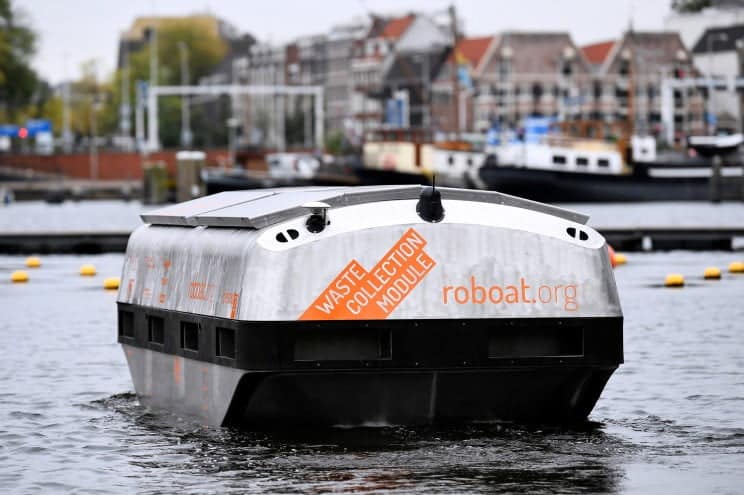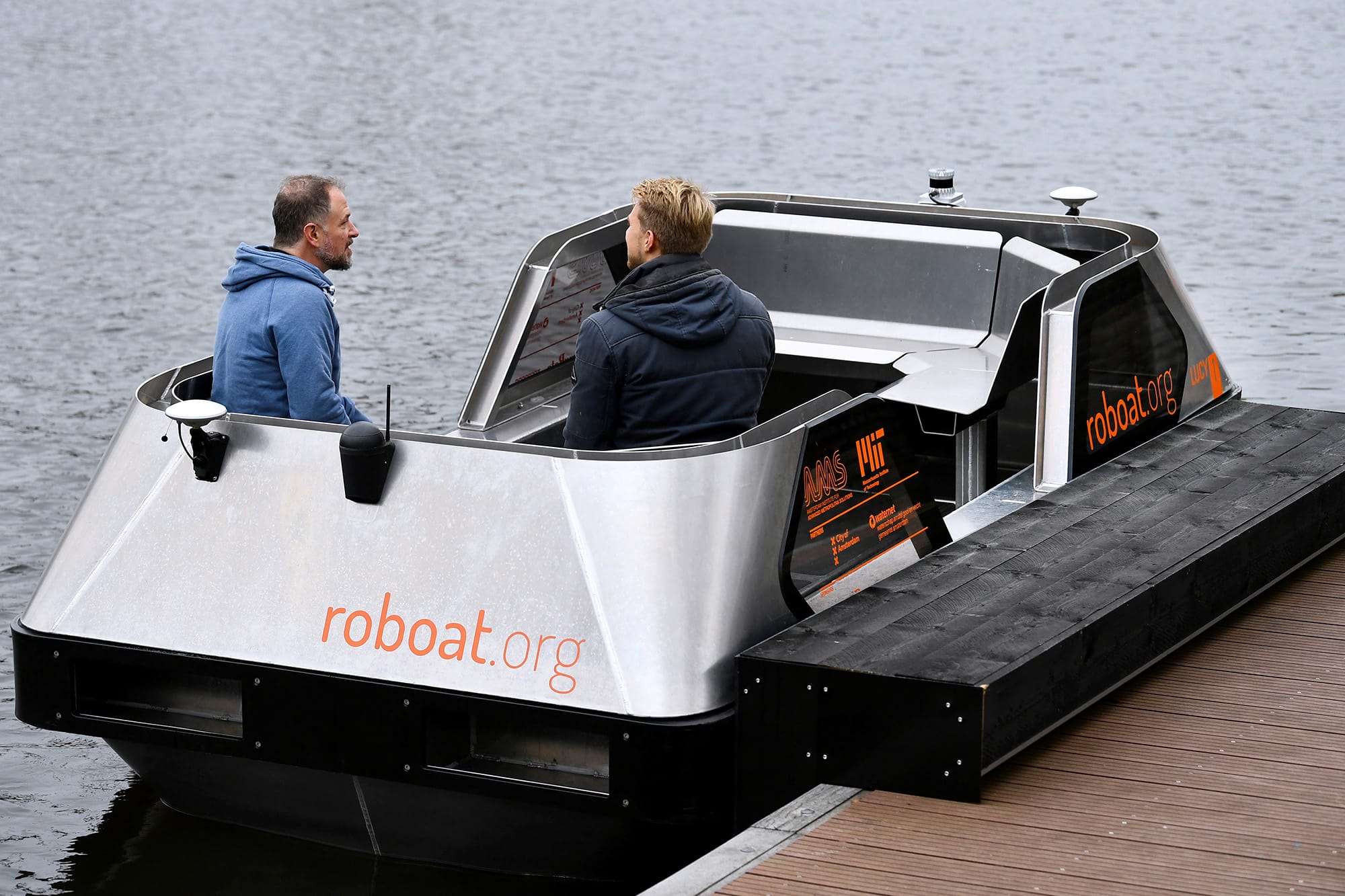Visitors to Amsterdam may soon spot small, self-driving, car-sized vessels cruising the city's canals. Autonomous boats, which silently pass by ferrying passengers, delivering goods or transporting waste. Ladies and gentlemen, here are the Roboats. What do you think of the name?
More captivating than "autonomous floating vehicle", right? This is a project that will shortly begin test trips aimed at improving the transportation options of the crowded Dutch city.
We have a lot of road traffic cluttering up our little streets. At the same time we have a lot of open water, in the canals… That's why we developed a self-driving boat to help with logistics in the city and also to take people around.
Stephan van Dijk, at the helm of the Roboat project in collaboration with MIT.

We start with the first two boats
After four years of testing smaller versions and refining the concept, manufacturers showed off the first two full-size functional Roboats last Wednesday. One of the vessel's first test applications will be for an unglamorous but important task: waste collection.
The work is normally done by trucks, but they cause traffic jams and pose a danger to pedestrian safety. Instead, the Roboats will act as floating garbage cans, returning to the base when full. The city of Amsterdam, which supports the project, is evaluating positions for a pilot waste collection project with roboat which is expected to start in early 2022.
The roboats will have to be digitally connected to the city's maritime traffic management to avoid collisions, but Stefan Van Dijk, head of the project, says that without human drivers and excellent night vision there will be very little risk. The possibility of using them 24 hours a day will then be able to move the logistics to the night, leaving the pleasure craft during the day.

How is a Roboat made?
Roboat technical details are available on project website, including battery performance and wireless charging system. Regarding the characteristics, consider a Roboat like an upside-down drone: under the surface of the water there are two propellers (bow and stern) and two thrusters (on the sides of the bow). This allows the vessel to maneuver very agilely, including mooring maneuvers.
A scanner at the front, two GPS systems (bow and stern) and multiple cameras on the sides help Roboat with positioning. The programming of the vessel, however, is carried out by computers on land. Currently the vessel does not have authorizations to sail with passengers: before long, however, this 1200 kg (2.645 lb) hull will show its full potential.
A Roboat fleet can really surprise: not just for passengers, waste and transport models. Many connected boats can act in unthinkable ways: think of floating platforms for concerts, temporary bridges (certainly less beautiful than this), or a circle of boats to circumscribe an oil spill.
The only limit is your imagination.


